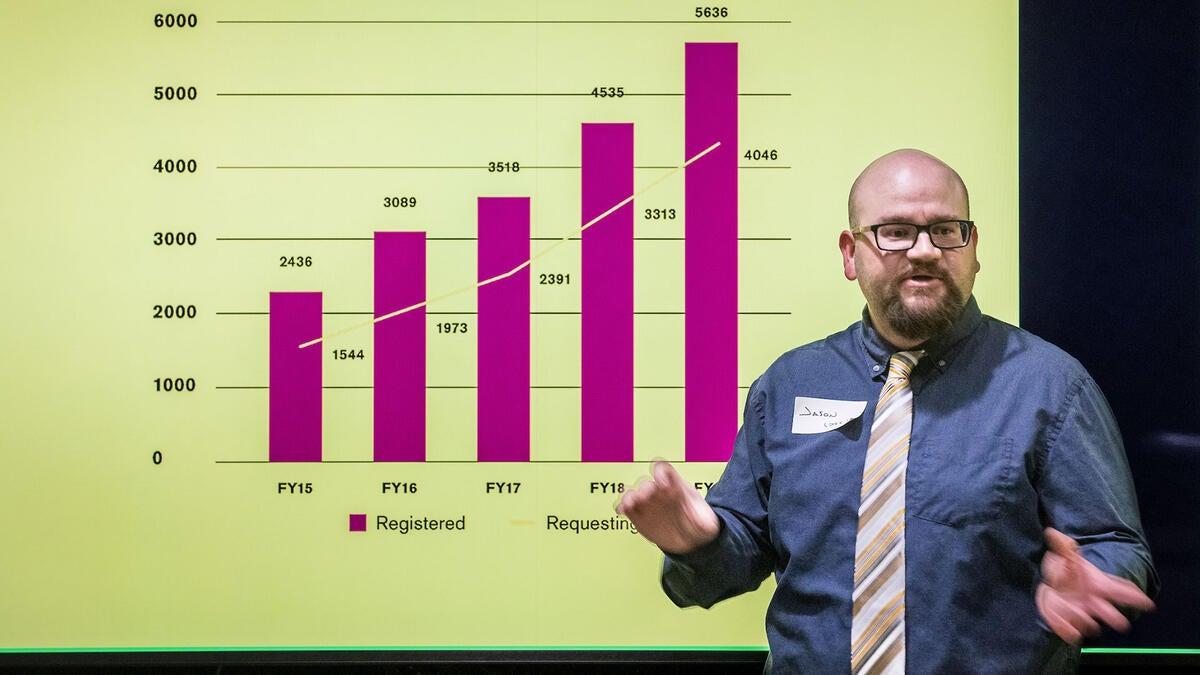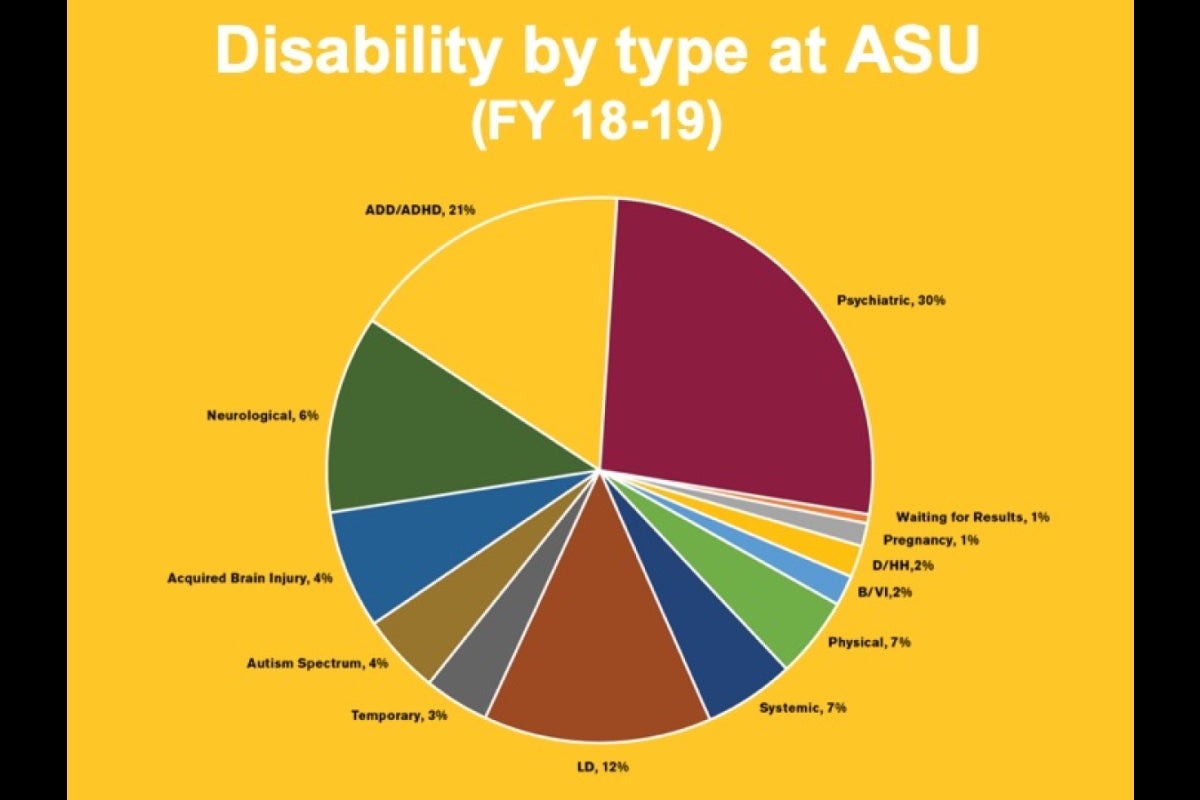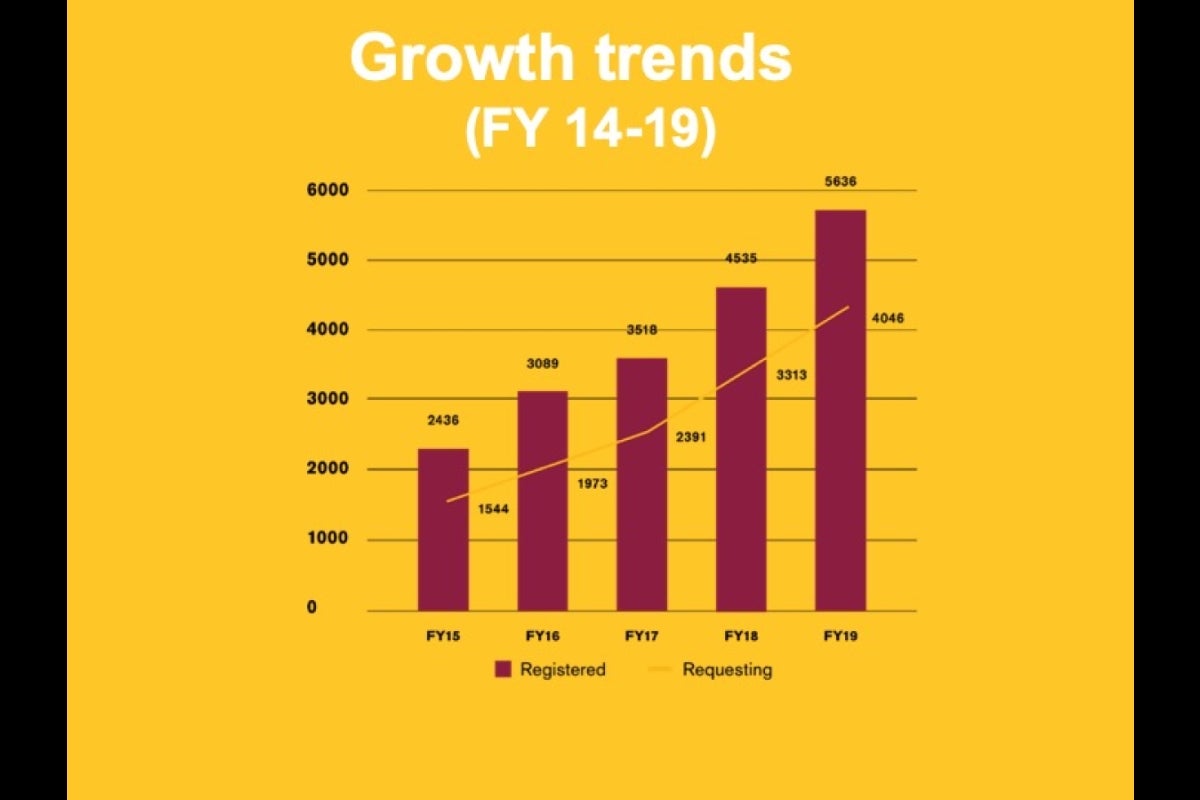Many of Arizona State University’s students face learning challenges that no one can see. These “invisible” disabilities can include anxiety, autism, processing disorders or diabetes.
A new training program called Access Zone is designed to increase awareness among ASU faculty and staff about different kinds of disabilities and how to create support for all students.
Developed last year, Access Zone is based on the same principles as the campuswide programs SafeZONE, for awareness of LGBTQ students’ issues, and Proving Grounds, which helps faculty and staff address concerns faced by military veterans, according to Chad Price, director of the Disability Resource Center at ASU.
“A lot of people are familiar with disabilities that are more visible, such as people who use wheelchairs or white canes,” he said.
“With the invisible disabilities, we would hear feedback from our students that, ‘They just don’t understand,’ and we’re trying to raise that awareness,” he said.
Students register with the Disability Resource Center to get services and request accommodations in class. The disability access consultants work with professors on supports such as notetakers, extended deadlines, access to oral testing, video captioning services, alternative formats such as text-to-audio, and many more options. The center is now working with faculty to make sure all course content is accessible on Zoom as learning takes place remotely this semester.
“The largest number of students who come to our office have hidden disabilities, such as learning disabilities or psychiatric disabilities such as depression or anxiety, or a medical condition, and when you first look at them you have no idea and even when you interact with them, it seems all is well,” Price said.
The number of students with autism has been increasing at ASU.
“A couple of years ago, it was 30 or 40 students and now we’re seeing a couple hundred students on the (autism) spectrum,” Price said. “That’s another question that we get from faculty: ‘How can we do our best work with students on the spectrum?’”
Overall, the number of students registering with the Disability Resource Center has more than doubled in the last five years, with more than 5,600 students registered in 2019.
“I don’t know if we have an answer why it’s grown other than that students are becoming more familiar as well as more comfortable with registering,” Price said.
“We believe that we’re low in our registrations, because when you look at the statistics in the United States of individuals who identify as someone who has a disability, it’s from about 12% to 19%. We’re at about 4% to 5% of total population of students.
“So I think we’ll continue to see an increase.”
Access Zone workshops are intended to increase faculty and staff awareness of all disabilities, including invisible conditions. The sessions are three hours, but can be modified to be shorter. An online version also is in the works.
The seminar covers history, law, the scope of the resource center and the complexities of supporting students with an invisible disability.
“Access is a right, a moral good and it’s federal law. We’re leveling the playing field, which is part of ASU’s charter of inclusion.”
— Jason Garcia, disability access consultant
Jason Garcia and Teddy Moya, disability access consultants with the center, recently held an Access Zone session for several faculty members. Moya helped develop the program along with Shanna Delaney, a project coordinator in the College of Health Solutions, and Elsbeth Pollack, formerly a disability access consultant at ASU.
“Disclosure can be a pain point,” Garcia told the group.
“Students must disclose their disability to the DRC to register for services, but they don’t have to tell their teachers. Then, when there’s an issue, the professor receives a vague letter from the DRC,” but without revealing the student. The center is prevented by law from disclosing a student’s disability.
“We encourage the student to have those deeper conversations with faculty and sometimes the notification letter can be the beginning of that,” Garcia said.
Access Zone also includes interactive exercises to give participants an idea of what it’s like to be challenged. For example, everyone is asked to quickly read a page of text that’s upside down and backwards, as a person with dyslexia might see it. Another exercise simulates how anxiety in a class full of peers can affect performance.
“It’s too nuanced to capture what a disability really feels like,” Moya said, “But these activities raise awareness about how a student with a disability might perceive a classroom task. Students with traumatic brain injury or learning disabilities process differently.”
All accommodations are case specific, according to the needs of the student as well as the requirements of the course, Garcia said. And support goes beyond the classroom, including events and activities on campus.
“Access is a right, a moral good and it’s federal law,” Garcia said. “We’re leveling the playing field, which is part of ASU’s charter of inclusion.”
Troy McDaniel, an assistant professor in the Polytechnic School, attended the Access Zone training session last month. He researches haptic technology for people with disabilities, and so found the session especially relevant.
“I found Access Zone training very insightful and valuable,” he said.
“Most helpful was gaining a better historical perspective of disabilities, both in terms of how protection for individuals with disabilities has progressed as well as how disability has been approached, such as the various models from moral, to medical, to social, and so on.
“The activities were engaging and thought-provoking.”
Contact the Disability Resource Center for information on scheduling an Access Zone training session.
Top image: Jason Garcia, a disability access consultant with ASU's Disability Resource Center, leads an Access Zone training session at the Decision Theater on the Tempe campus. Photo by Charlie Leight/ASU Now
More Sun Devil community

ASU students receive $25,000 scholarships from NBA legend Magic Johnson
By Henry Smardo Serenity Reynolds Cronkite student Serenity Reynolds balances classes, homework, clubs, internships and jobs, and tuition is always top of mind. She…

ASU Accessibility Awareness Day advocates for a more inclusive digital future
By Jonathan CrowellAs technology continues to drive learning and research innovations, so do efforts to ensure digital products and environments are accessible by all.Last week, Arizona State…

ASU student, Navy vet pursues greener future in sustainability
As Arizona State University holds its annual Salute to Service celebration, honoring individuals who serve the nation and their communities, Shana Harly stands out for her commitment to both her…



